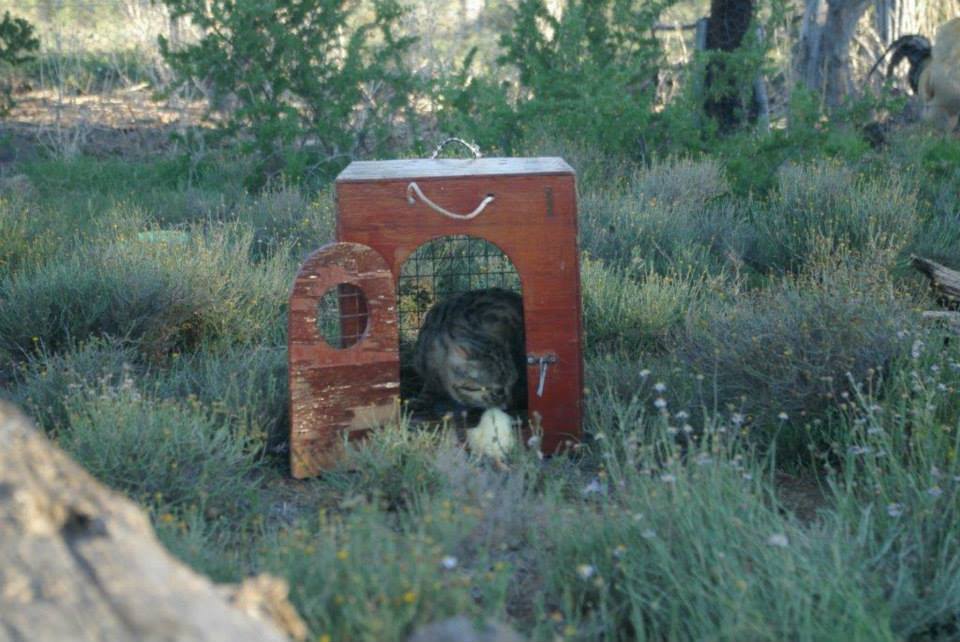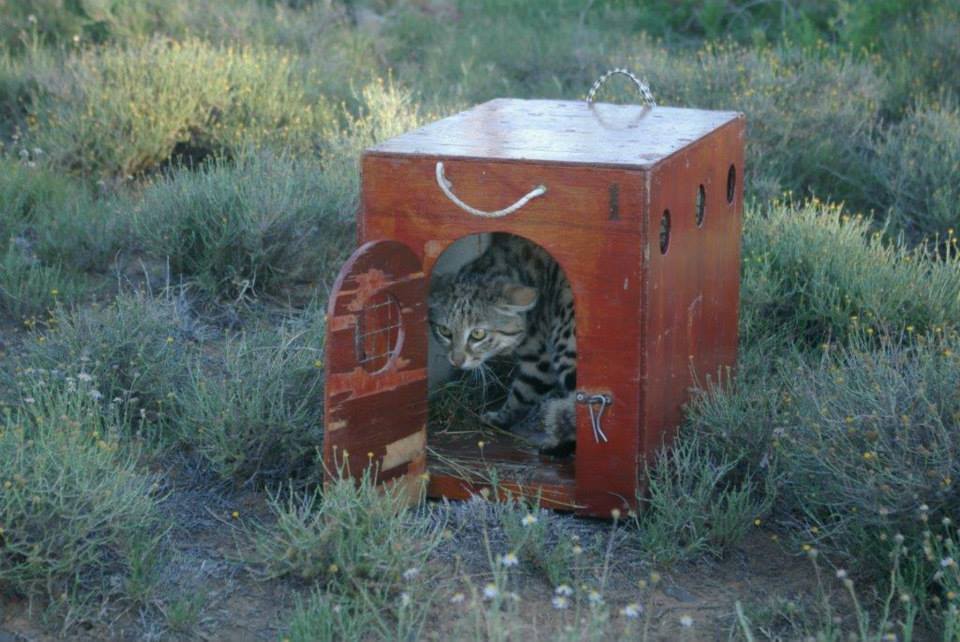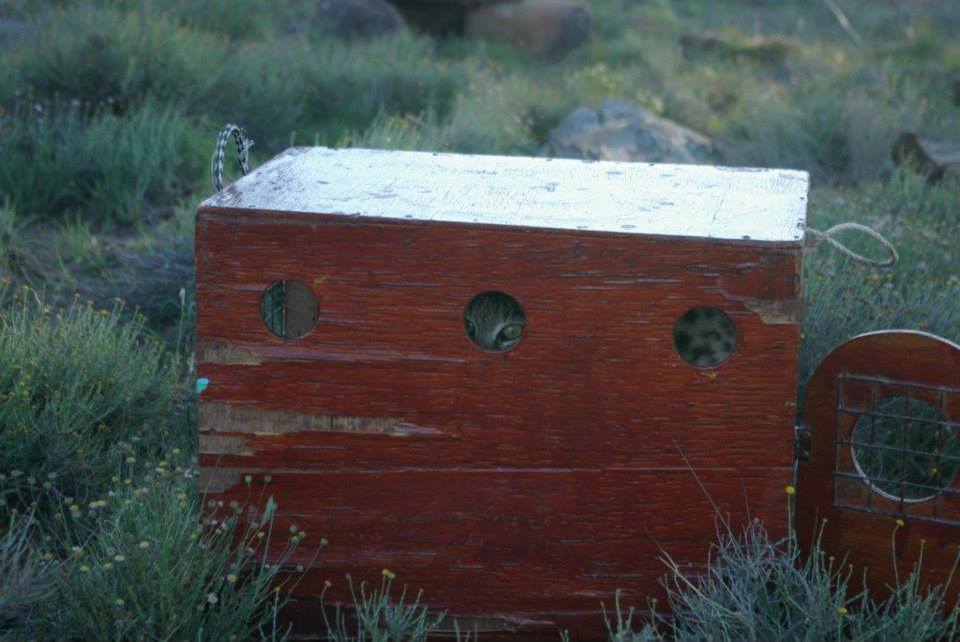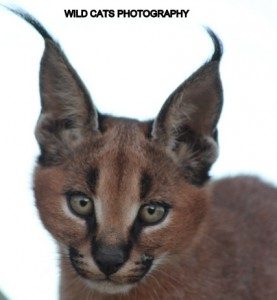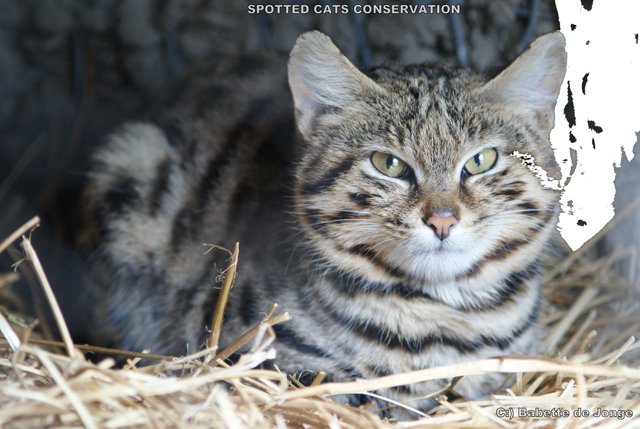
The two black-footed cats, both males, at our Spotted Cats Conservation Project were so unfortunate to end up in gin-traps. The workers who found them in their traps brought them to our project with the message to keep them or they will be killed. An easy choice for us of course since we already had plans to include black-footed cats in our conservation project, since these cats are also endangered in their natural habitat. One of the reasons is the exact same fact that they are often trapped and killed, for no reason.
Adopt Blacky / All about black footed cats
Blacky was the first to come in. He was pretty wild and agressive when he first got in, obviously not happy with the situation. Often black-footed cats die because of stress, or insufficient feeding, in captivity. If we would release him again in the same area he would no doubt be trapped again, and that time probably be killed, so this was not an option. We started building huge enclosures for them a.s.a.p. to give him more space and at least a safe life, to judge later on what would be the best thing to do. He actually seems to be very satisfied in his new home and is very relaxed and not at all agressive any more.
November 14th 2013, Relocating Blacky for Breeding Purposes – Our black footed cat ambassador Blacky was relocated to a new home yesterday from our Spotted Cats Conservation project to Clifton at Cat Conservation Trust, to accompany our female Diva. Moving black footed cats cause always stress we prefer not to have for the black footed cats who easily got stressed and ill because of it, but we of course also have to think and plan carefully what the best steps are for our ambassadors but also for the species in general. We rescued Blacky at SCC from a gintrap and he seems to thrive well at our project, so now hope he settles in well at CCT where all love and expertise is there for the smaller catspecies, so hopefully all goes well since our major setback today with our other male Footy. Luckily Blacky did enjoy eating the first chicks that were offered to him so it always is an important and good sign if they start eating. We keep you all up-dated.
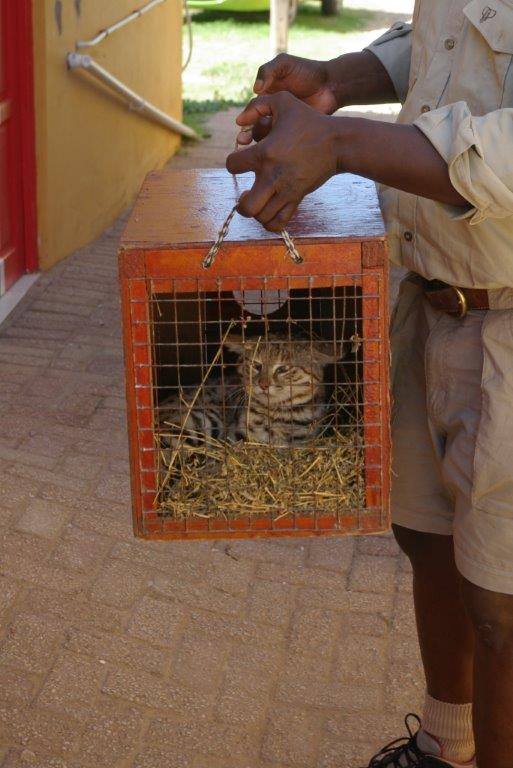
Yesterday afternoon, 13/11/2013, Blacky was collected from our Spotted Cats Conservation Project.
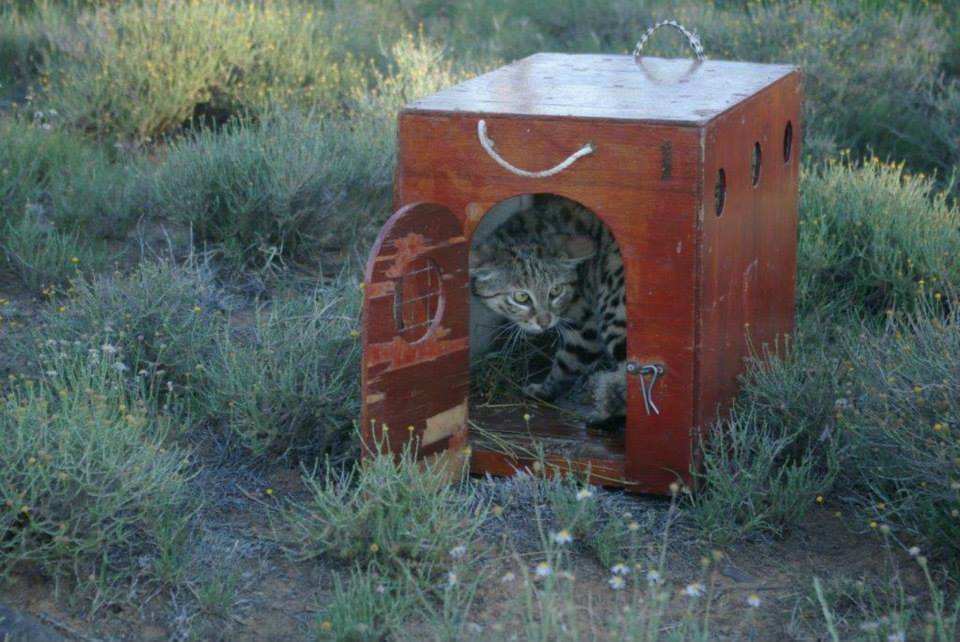
After the arrival at Clifton, CCT, Blacky is looking around in his new home from a safe place inside the travelling box.
The first chicks that were offered to him, taste nice
Still not very much at ease, but with some time, he will starts investigating.
Peeping…Blacky 🙂
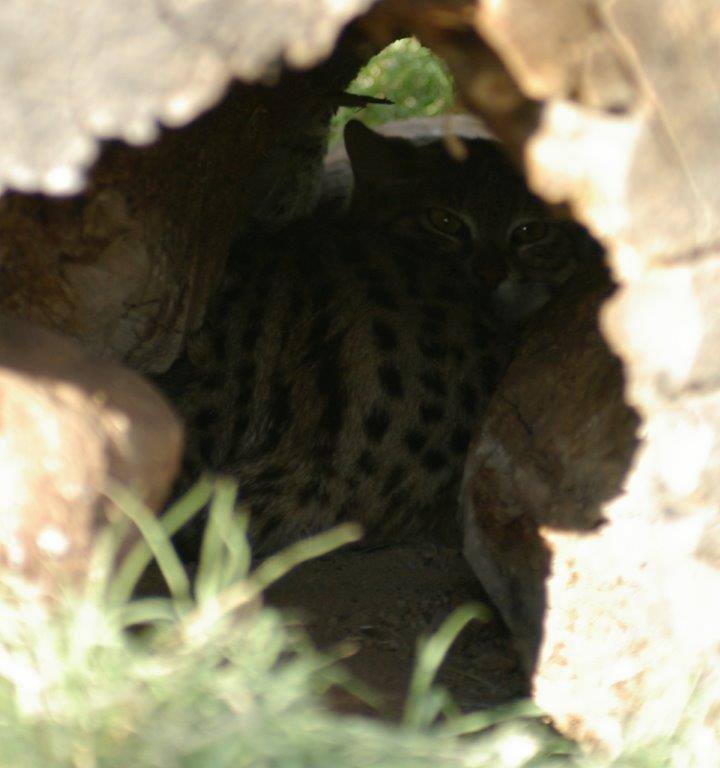
This morning he was found at a different place so at night he no doubt started exploring his new territory. He first needs to be tested for FELV as Footy was a victim of that horrible virus, luckily Beauty was tested negative.
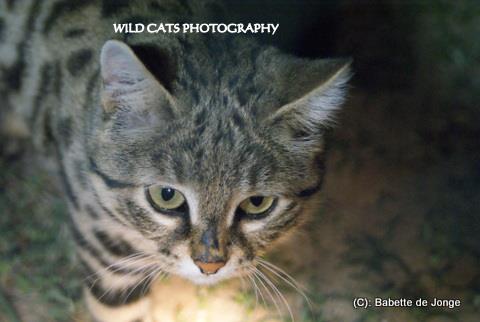
Footy chasing insects
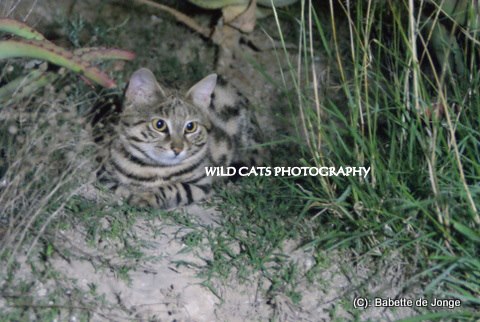
Gorgeous Blacky taking a break
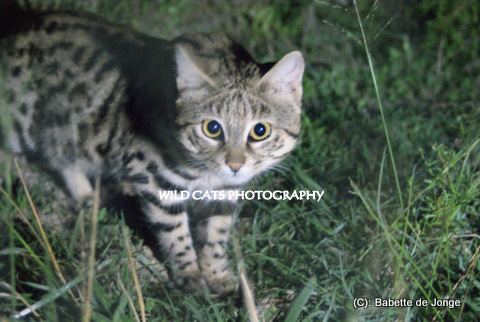
“Hey how are you?”
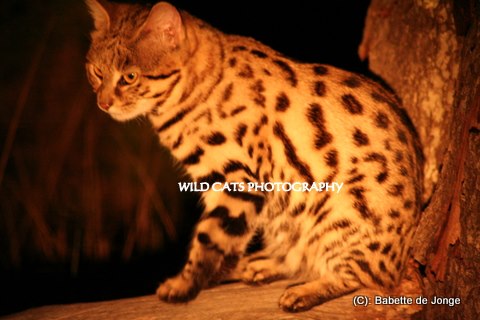
The wild cats come to live in the dark hours…..in the average zoo they lock up the cats around this hour when they finally like to act naturally……like in the wild.
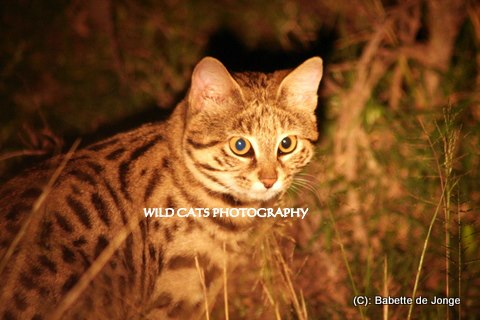
Learning so much just by observing….but you must be patient and have true love for the cats.
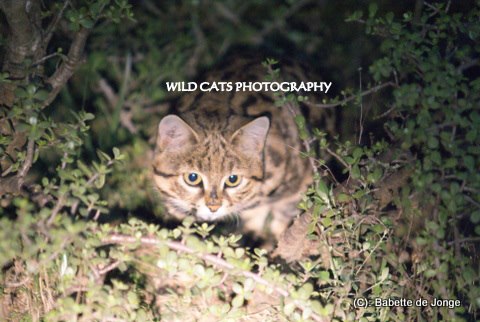
Footy hunting for snacks
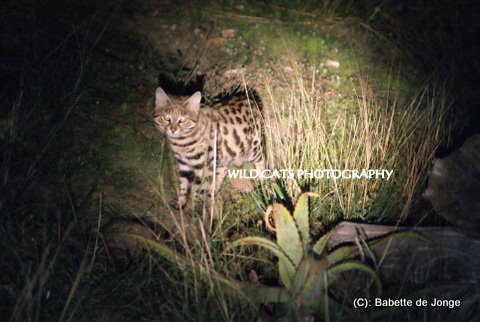
They are not bothered by the spotlight…..but you must sit very calm and no sudden movements. Only then you can observe the black footed in this great way.
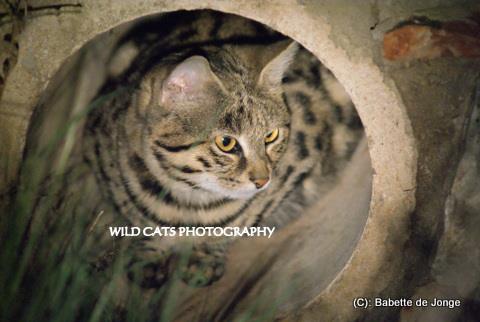
Favourite spot for both boys, in the pipe, though they usually sit there during daytime.
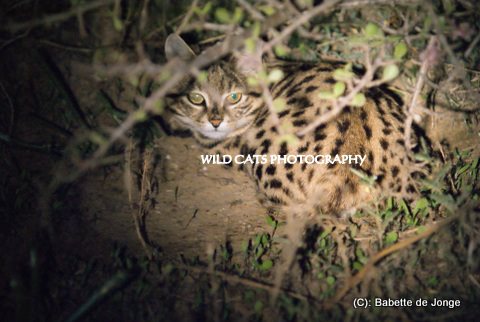
Natural look, looking for good camouflage and hide-away in the bushes.
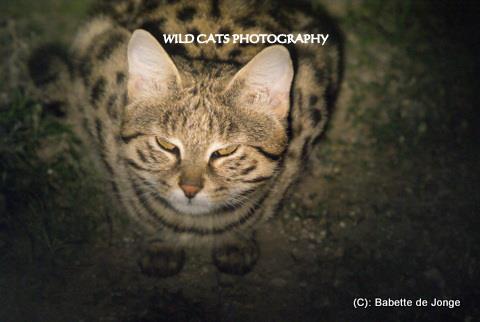
Getting a bit sleepy after all action
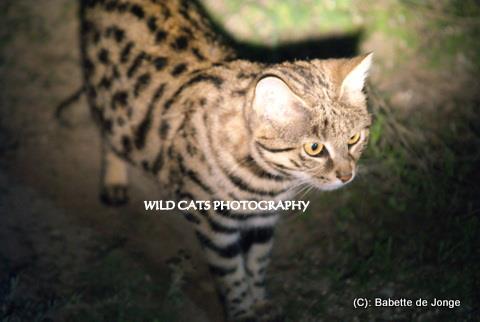
Alert again…..
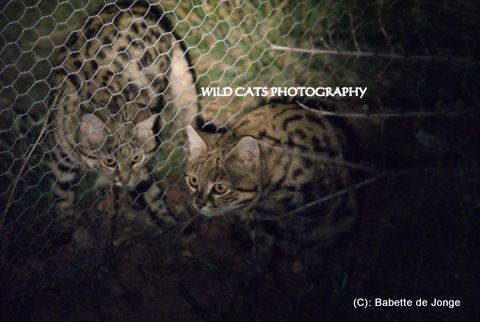
Most surprising was the fact that the two boys really look for each other’s company and display no aggression towards each other at all.
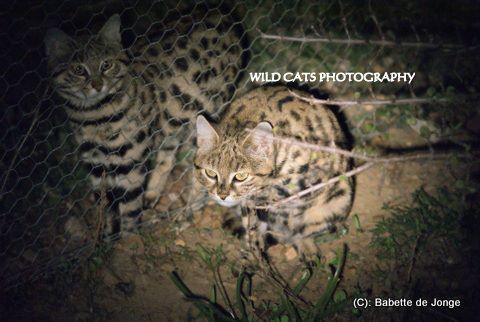
While observing the different species of wild cats you always discover not everything is like written in “the books”. You can only learn by observing yourself.
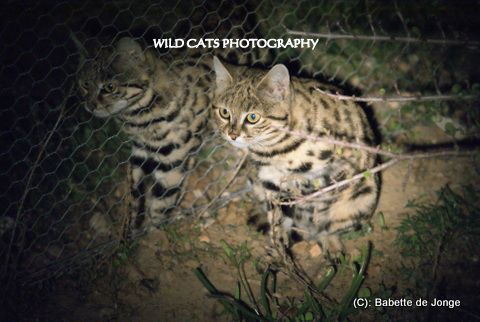
Love this picture: Blacky (left) and Footy (right). Two wonderful ambassadors of their criticially endangered wild species. Soon female Beauty will be introduced to one of them…..also a victim of gin-traps.
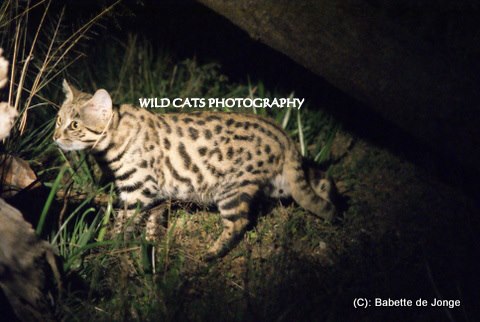
Blacky strolling through the night..
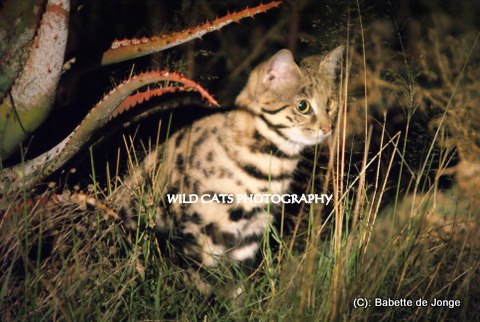
Looking out for some prey…or females
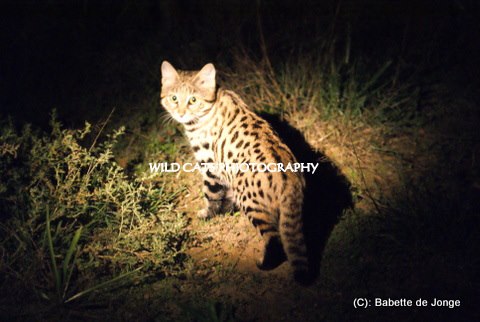
They are so much more at ease in the dark
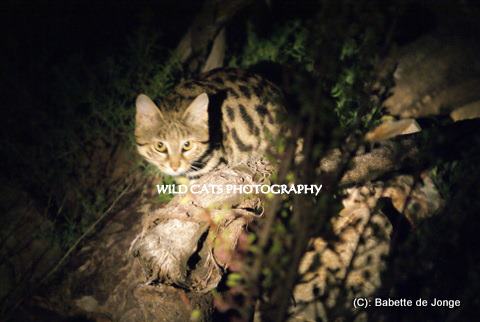
Using every spot of their enclosure
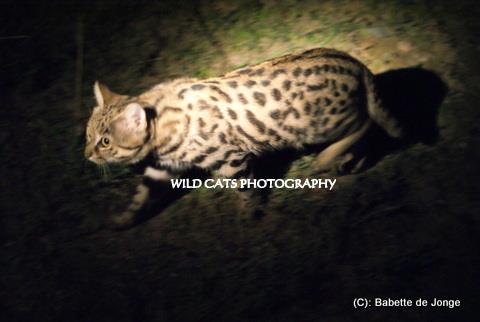
Running actively and chasing insects
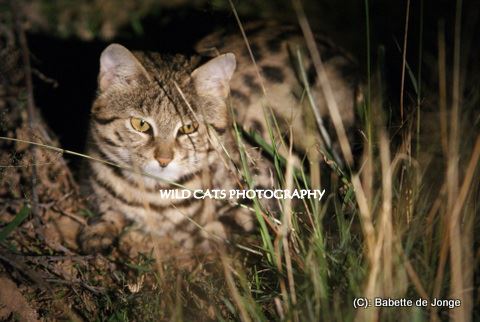
Black footed Cats are so gorgeous, the smallest cats of South Africa and alongside the rusty spotted cat (Asia) the smallest of the world.
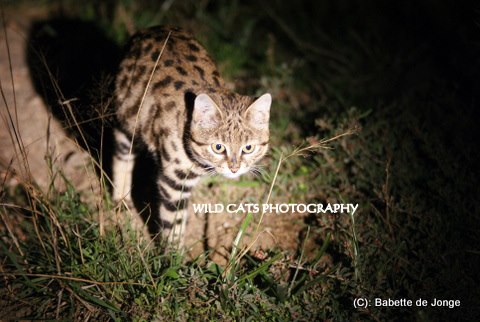
Our spotlights are bringing lots of nice insects for the boys to catch.
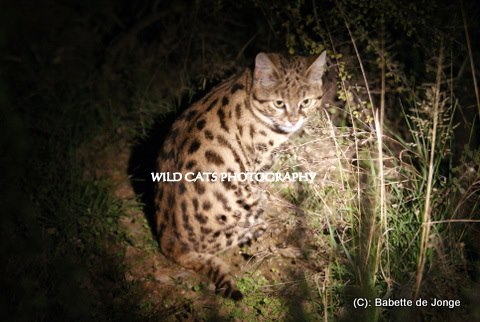
Very alert….
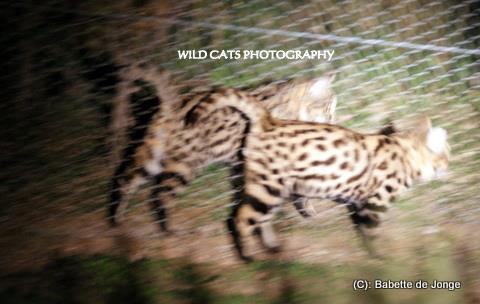
Funny shot of the two boys on each side of the fence, this side Footy and the other side Blacky.
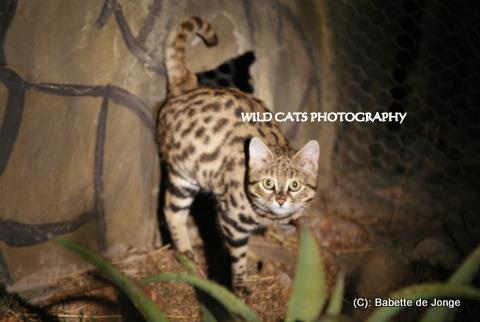
Footy scent marking…..spraying
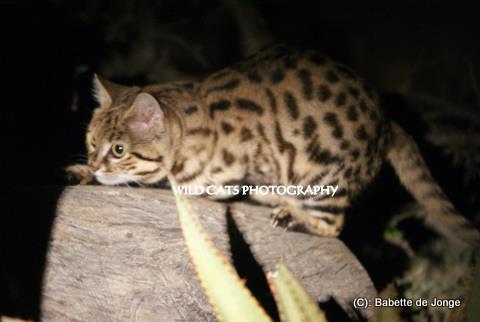
Scent marking: Scraping the nails
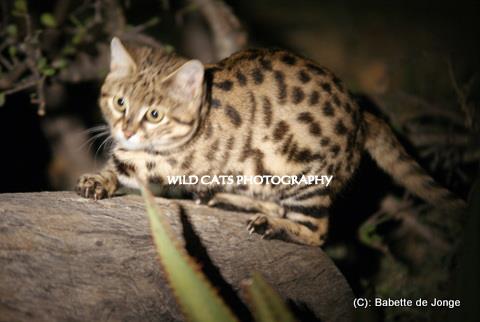
The amputated leg doesn’t keep Footy from displaying natural behaviour….
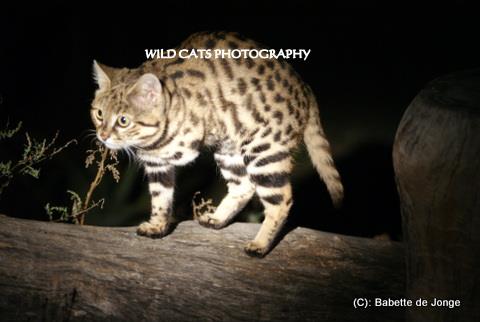
our 3 legged Footy on the treestump…
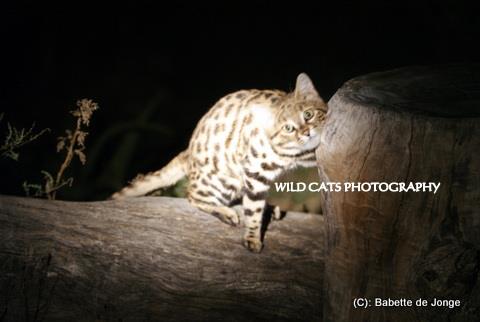
Scent marking again by a chin-rub
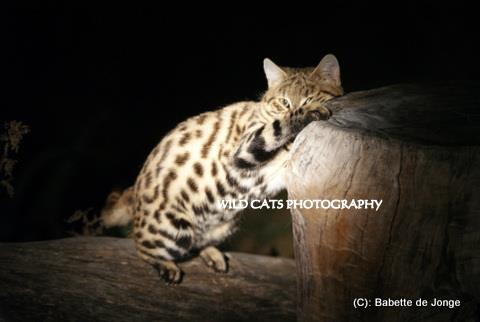
So nice to see Footy acting naturaly and not bothered by his handicap.
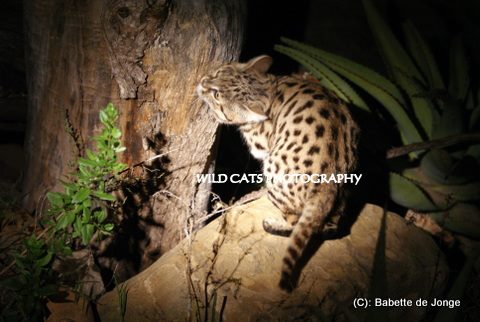
What do I smell here?
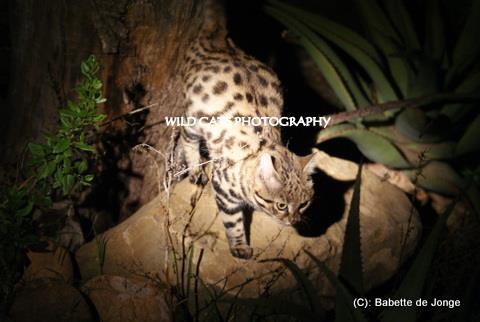
Let’s spray again….this is my territory
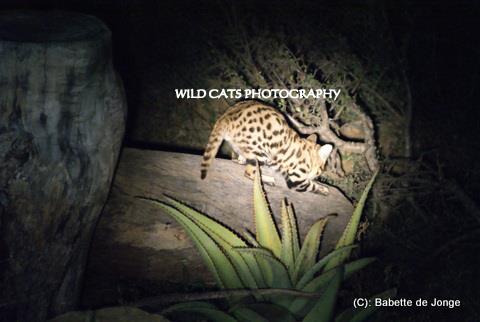
And scrape again with the nails
January 2014 – Since we started our alliance with Cat Conservation Trust first the WCW black footed cat female Diva moved there, later joined by male Blacky in order to be introduced and form a couple at a later stage. We went there last week to open up between the two for further introductions and to monitor the first moments to see for ourselves how much both of them like each other, see photos.
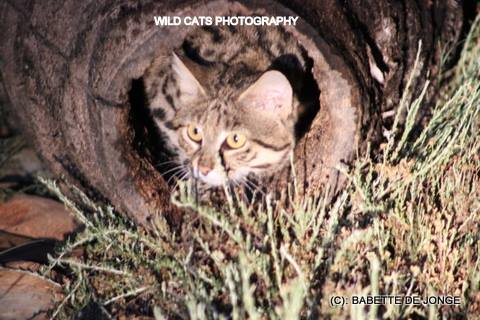
Shortly after opening up, we could find Blacky near Diva….
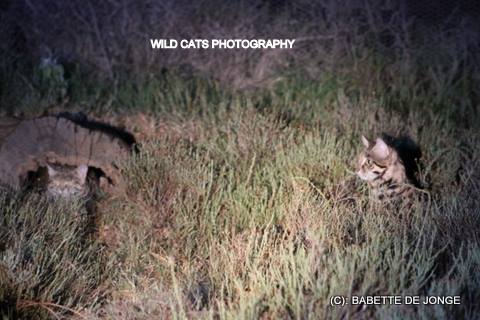
Blacky found Diva, called for her and made toilet to look extra attractive…
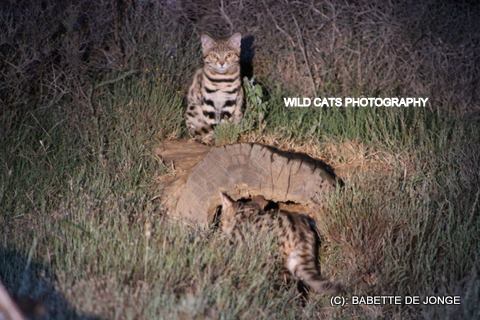
Blacky exploring Diva’s hiding place…she already got out and watches Blacky…
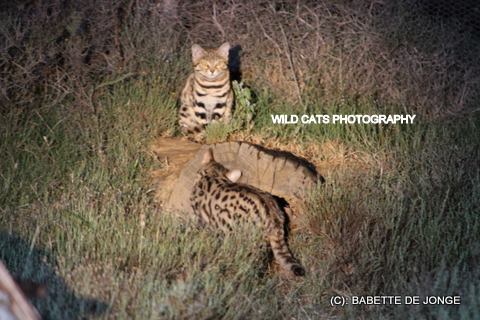
Coming closer….
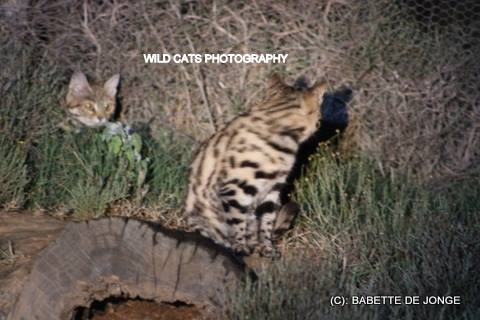
Now Diva wanted to see this gorgeous male from up close…
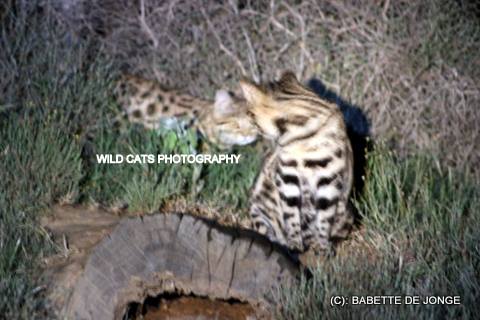
And nose to nose they said hello and disappeared together in the night……we just left them with some privacy…..with good hope for the future!!!
Marion Holmes from CCT later confirmed to us that she noticed a clear difference in Blacky’s behaviour, not being as “hissy and stampy” as before. One morning she found the two lying cosely together at Blacky’s favourite spot. Promising for the future….as this couple is very important for the future of this very endangered, and difficult to breed/keep wild catspecies…the smallest of South Africa.
